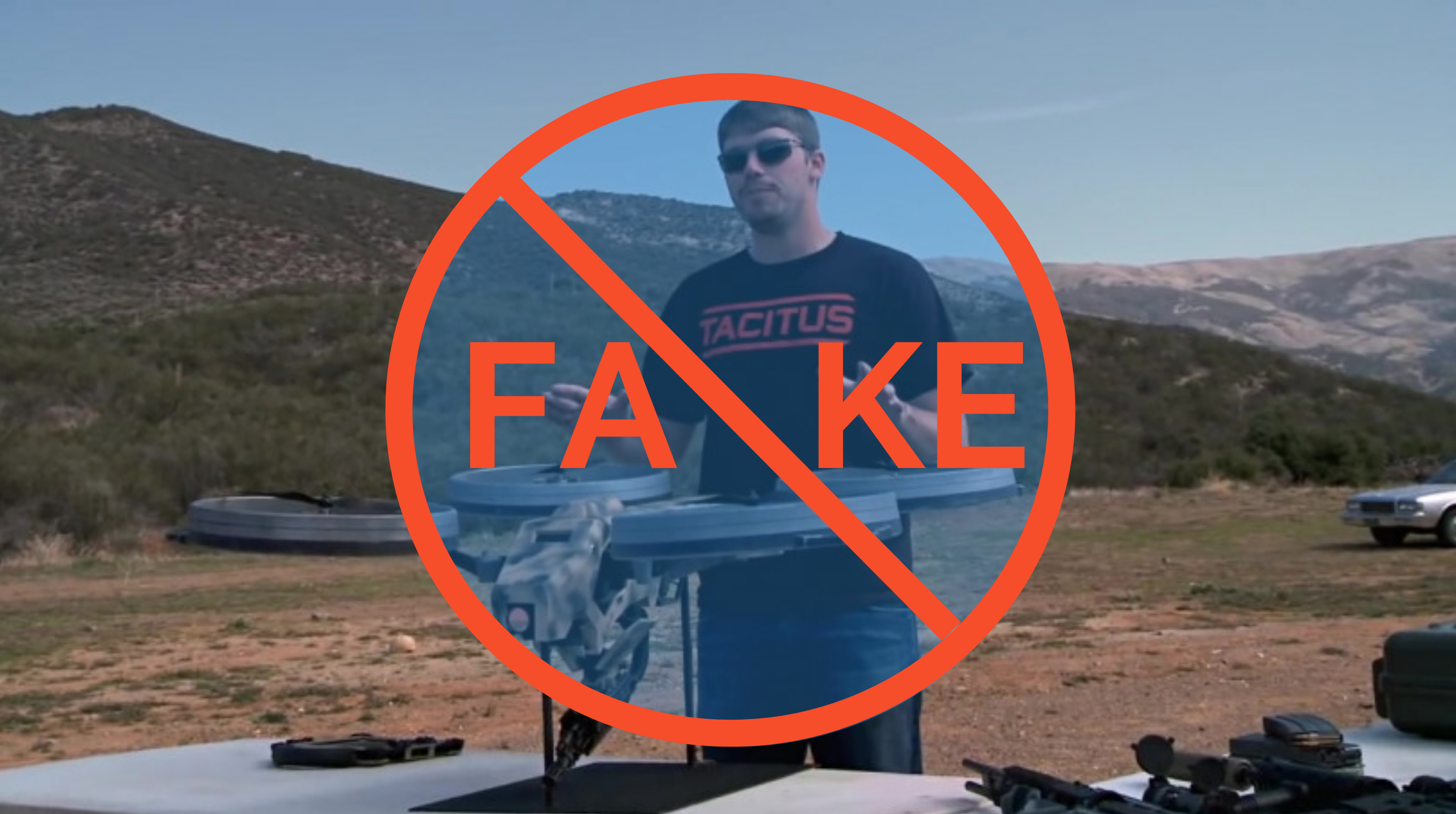For a long time, I debated how to analyze and evaluate this video. Initially, I planned to break down its inaccuracies by category and address them individually. However, given the overwhelming number of issues, I opted for a frame-by-frame analysis instead.
Who is Dmitri Potapoff?
The controversial video was uploaded by a YouTube channel named “FPSRussia.” The channel features numerous firearm videos, where guns are used in spectacular but often impractical ways. These firearms are indeed real—hardly surprising in the United States.
The man in front of the camera calls himself Dmitri Potapoff and speaks with a heavy Russian accent. Here’s where the charade begins: the man is actually Kyle Myers, born on May 9, 1986, in Hart County, Georgia. His videos don’t take the topic of weapons seriously, favoring instead shooting at melons, filled PET bottles, or gasoline-soaked mannequins that then explode dramatically. In such a setting, it should be clear that videos from this channel aren’t always meant to be taken seriously.
Further research reveals some fascinating details about Kyle Myers, a.k.a. Dmitri Potapoff. He was later arrested for drug possession, had his property searched by the U.S. Bureau of Alcohol, Tobacco, Firearms and Explosives (ATF), and one of his crew members, Keith Ratliff, was found dead under mysterious circumstances.
The Alleged Killer Drone
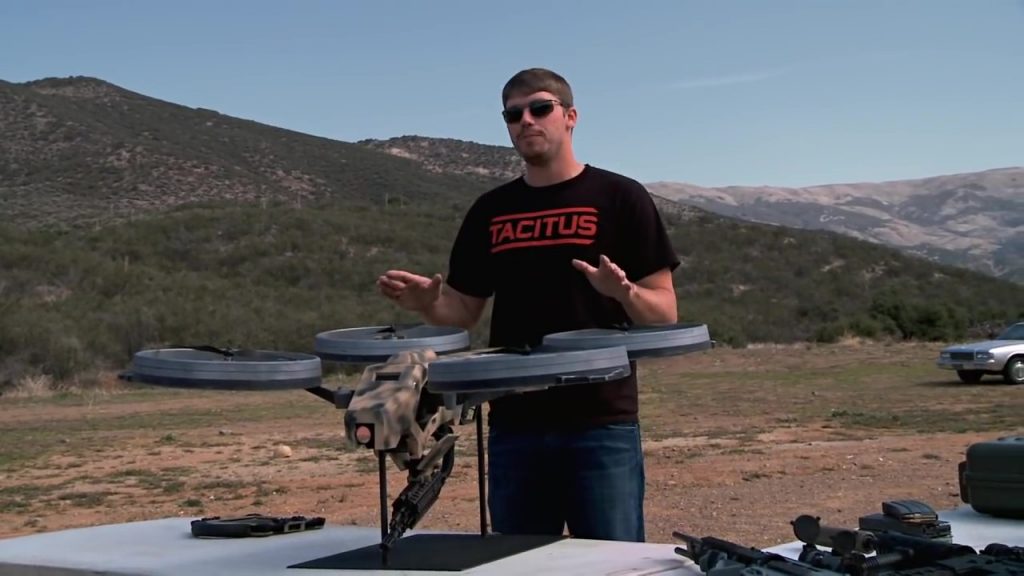
Admittedly, the scenario depicted in the video is not entirely implausible. Militaries worldwide are constantly innovating UAV (unmanned aerial vehicle) capabilities. In Iraq and Syria, ISIS has used commercially available drones, packing them with explosives to target military checkpoints.
However, the following analysis will demonstrate that the specific drone in this video could never make such a scenario a reality. Simply put: Every scene of the drone in flight was created in a CGI lab. This device never left the ground.
You are currently viewing a placeholder content from YouTube. To access the actual content, click the button below. Please note that doing so will share data with third-party providers.
More InformationLet’s start at the beginning
Dimitri begins to explain what his copter can do. He explains the need for the soldiers of the future to have an overview of the battlefield in order to be able to act correctly. His copter is a tool that can achieve this. We take a closer look at the front and the built-in optics.
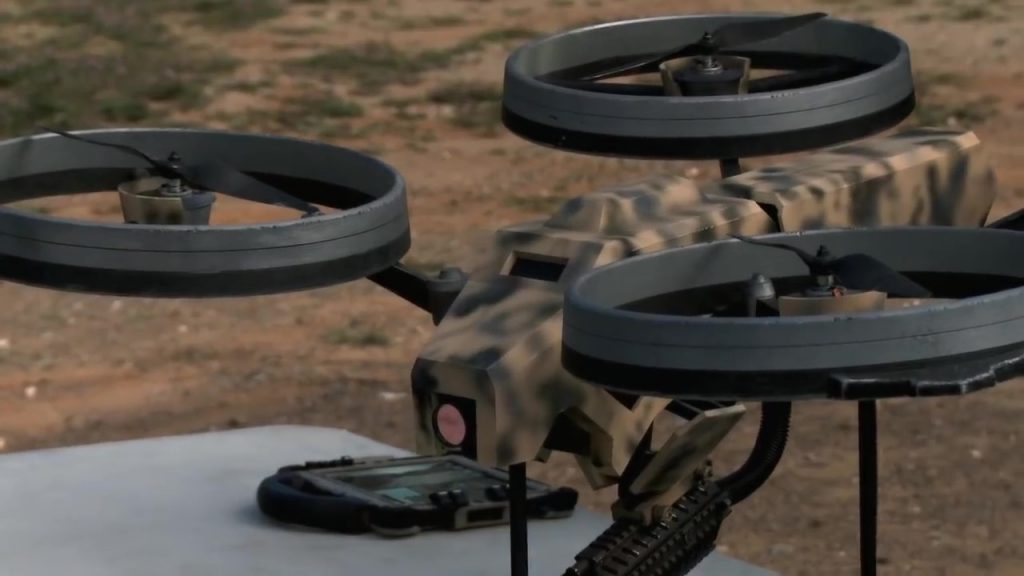
A soldier on the battlefield could do little with this optic, as it appears to be rigidly mounted, allowing at most swivelling up and down. Modern optics in the military sector certainly look different, as the following image of the optics of a Heron P drone of the German Armed Forces illustrates.
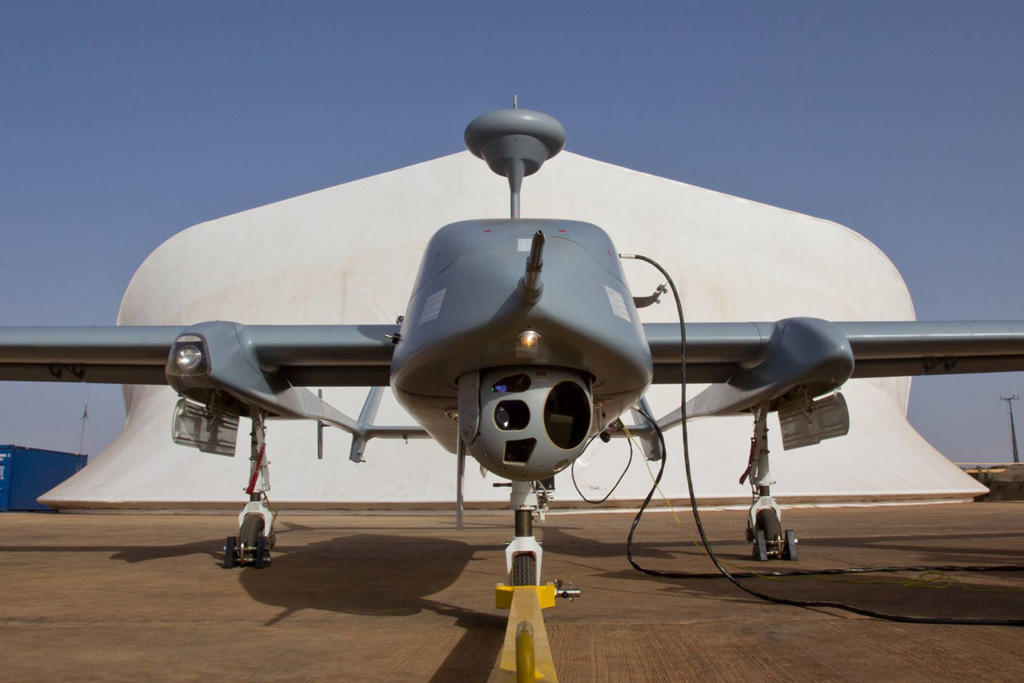
Heron P drone of the German Armed Forces | Photo: Wikipedia, Licence: CC BY-SA 4.0
The alleged weapon
This is where it gets downright silly. Dimitri tells us that the copter has a ‘submachine gun’ with a 100-round magazine. What can be seen in the picture, however, is not a functional weapon (more on this later). What you can see looks like the barrel, gas take-off and handguard of an AR-15 platform. However, the AR-15 is an assault rifle, like the M16 or M4 used by the US Army. So not a submachine gun. Just a small mistake, of course. But a weapons professional like Dimitri would certainly have noticed it.
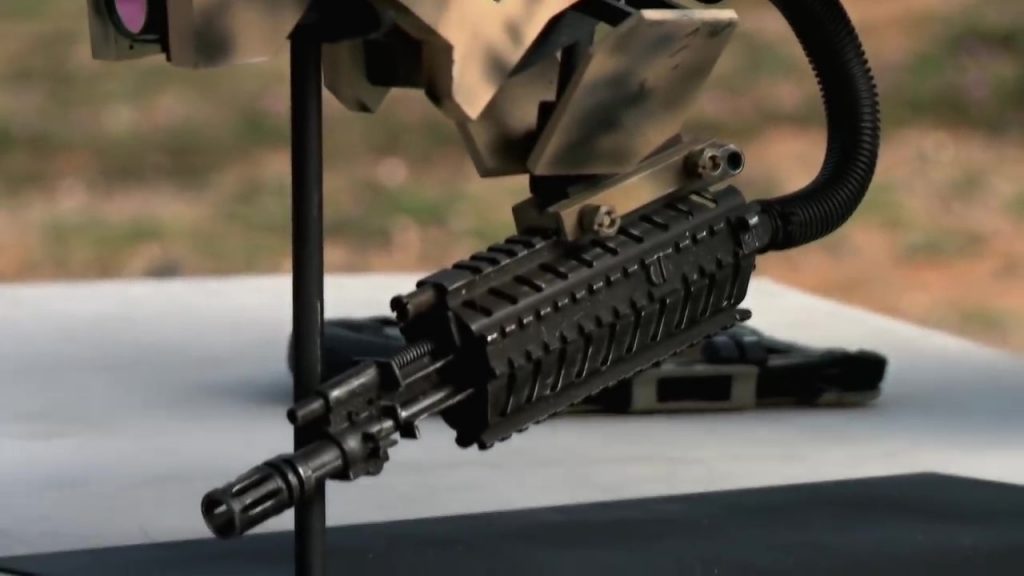
So let’s take a closer look at the weapon, which can be seen in the picture. In terms of weaponry, what is hanging there cannot fire a projectile. Essential components of a weapon are missing. The following video is intended to explain the mechanism and mode of operation of the AR-15, as well as many other gas-operated guns.
You are currently viewing a placeholder content from YouTube. To access the actual content, click the button below. Please note that doing so will share data with third-party providers.
More InformationElementary components are simply missing from this design. Theoretically, the ammunition feed, the trigger and the buffer tube should be hidden in the hose fixed to the rear with cable ties. In any case, it looks like a scantily assembled pile of spare parts. And not even this is assembled correctly. The barrel and gas take-off are obviously mounted upside down in the handguard. The geometry and the mounting pin for a bipod (in this arrangement, nonsensically on the top) suggest this.
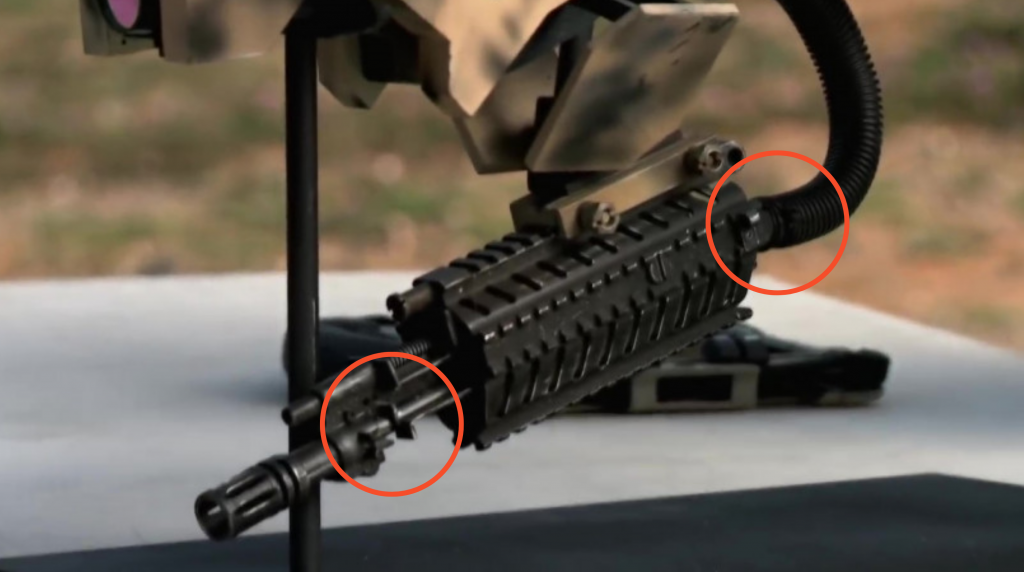
At the end of the ‘Weapon’ chapter, there is the attachment to the copter itself. This consists of a converted sight mount, which is screwed onto the NATO rail of the handguard with two screws. This may hold a red dot sight on the weapon, but not the weapon itself on the copter. Especially not if this thing could actually shoot. It is highly questionable whether such an attachment could absorb the energy of the weapon’s recoil in the long term.
Flight performance
Let’s continue with the video. Dimitri talks about the drone’s flight performance. It flies at 30 miles per hour and three quarters of a mile high. That’s the equivalent of 48.2 km/h and a flight altitude of 402 metres. That sounds reasonably realistic for a drone of this size. Unfortunately, Dimitri doesn’t give us any more technical details. We would have been interested in the drives, the rotors or the batteries used. The total weight of the aircraft would also have provided a crucial clue. Anyone familiar with the video will know that an inbuilt explosive charge is used at the end. All this, together with a reasonable flight time, raises the question of battery and total weight. As this is supposed to be a drone for military use, the flight time is relatively high, as you can’t do much on the modern battlefield with a flight time of seven minutes. Assuming that the weapon would work, I have calculated the approximate values. This results in the following values for the weapon, ammunition, batteries and explosive charge alone (without the copter itself):

Eight kilograms is a considerable weight for a copter of this size. As I said, this does not include the weight of the copter. If we estimate this at two kilograms, then at ten kilograms we are probably outside of what this construction should be able to achieve, if only because of the size of the motors used.
The transmitter
The transmitter is also praised as an absolute high-tech product. At minute 1:30, the feature that the pilot can see everything the copter sees on the tablet is praised. Well, that would have been news in 2003. Today, almost any toy copter can transmit this to a smartphone. The tablet, which is supposed to act as a transmitter, is only held briefly in the picture once. The image of the camera and two other windows on the user interface, which are not clearly recognisable, can be seen there. However, I miss the inputs for controlling the copter. Well, a high-tech product like this is bound to fly by itself.
The flight
This is where one or the other might be perplexed. The CGI effects of the drone in flight, obviously generated by the PC, suggest that this device has never taken to the air in real life. We will therefore concentrate on just two key aspects: The strafing of the puppets and the blast at the end.
The bombardment
At minute 02:10, Dimitri then turns on the lead tap. I have to make one thing clear at this point: The puppets are being shot at with real weapons, there’s no question about that. However, the bullets come from a shooter at ground level, who is standing on the right outside the image area – and not from the copter (which isn’t flying anyway). This can be seen in the very first shot. The first dummy is hit at the very front, but the angle of the copter and the weapon do not match. In this shot, it would aim approximately at the feet of the second doll. And then there are the annoying marks that such a projectile leaves in the air and on the doll. In circle number 1, you can see how the bullet (accompanied by gas and dirt) leaves the doll again. The cloud suggests that the projectile entered and exited horizontally and not from above. The second clue in circle number 2 is the impact of the projectile in the ground. Also horizontally behind the doll. If the shot had come from above, both the cloud and the impact in the ground would have to be pointing downwards. At this point, we will ignore the eternally identical shooting noise from the sound toolkit, the unrealistic muzzle flash and the fact that a drone would have difficulty absorbing the recoil of an assault rifle so effortlessly.
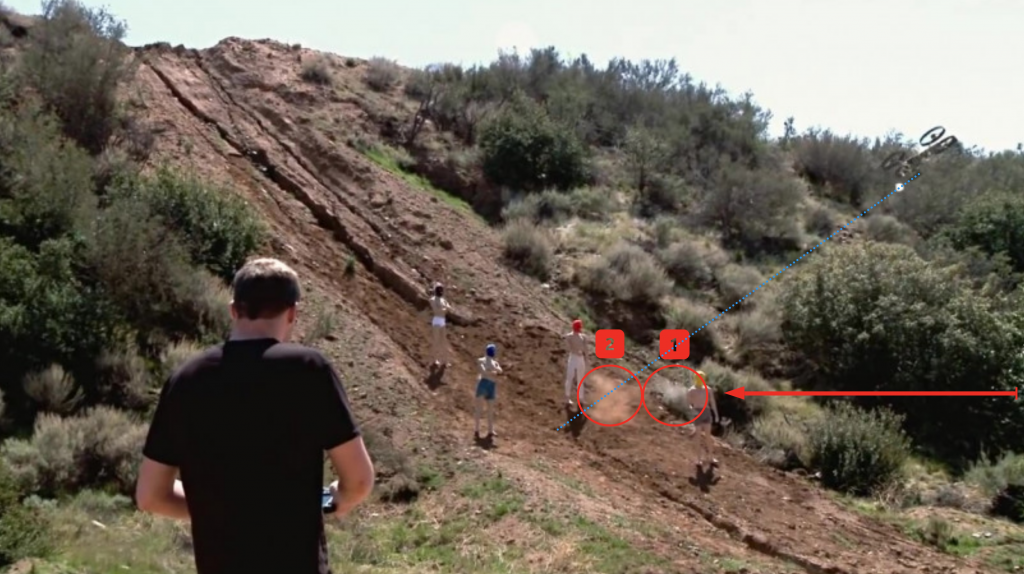
The spectacle continues and leads to the next highlight at minute 02:50. As the drone takes off, they go to the trouble of constructing swirling dust from the drives into the video. The pilot then flies through a window opening over a table where people are sitting. There are loose playing cards on the table. The copter flies over the table at a distance of approx. 10-15cm. The cards only fly away in the PoV perspective.
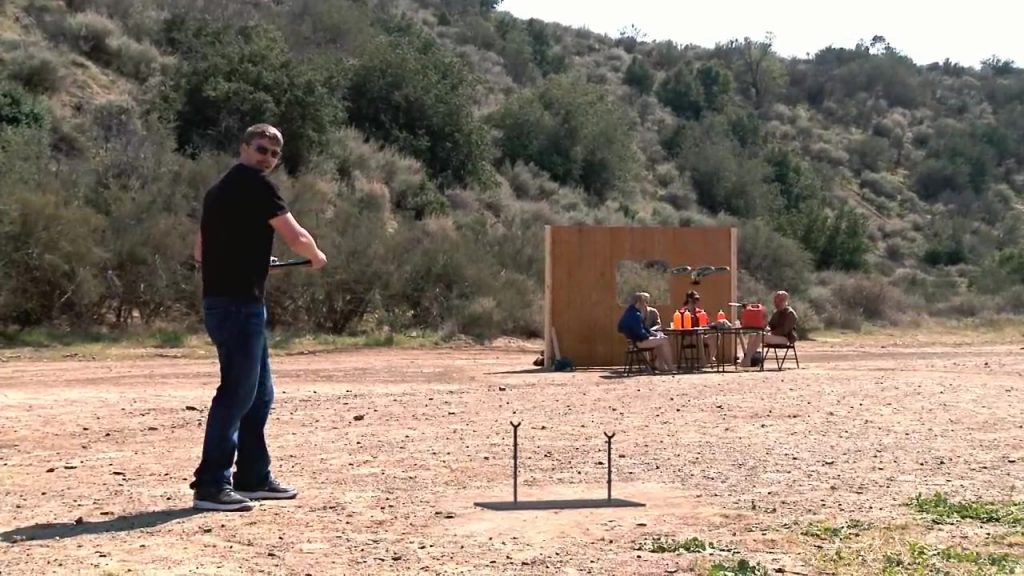
The people are then fired at by the copter. The copter is positioned at a 90-degree angle in front of the table. Here too, the traces of the impact suggest that the real shooter fired from the right edge of the picture. The shadows on the floor and the fact that the wall opposite the supposedly firing copter remains completely untouched further confirm this theory.
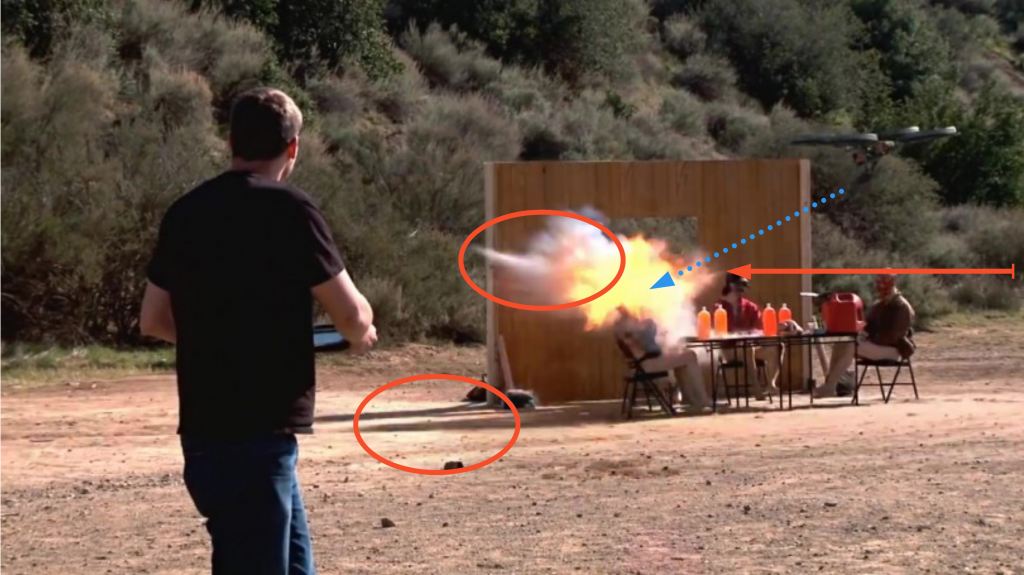
The grand finale
At minute 04:20, Dimitri then goes on the frontal attack. He steers the copter into the interior of a limousine, which then spectacularly bursts into flames. The deformation of the car body, which is actually the main focus of a booby trap, is rather minimal. The intensity of the fire also suggests that this is based on a simple petrol fire. I completely missed a shock wave or something similar, which should not be insignificant with such an explosive charge.
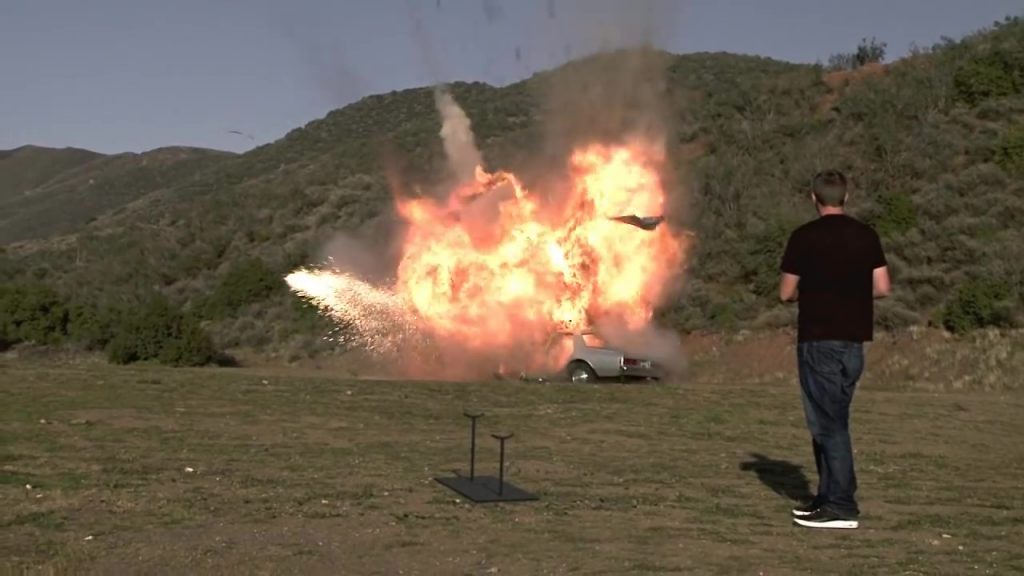
For comparison, a picture from a US Army training video for handling explosives. Here using the example of an old personnel carrier.

Less flames, less drama, but the structure and integrity of the vehicle and the (assumed) occupants are completely destroyed.https://www.youtube.com/watch?v=0nc98hzR-tk&t=253s
Conclusion
One thing must be made clear at this point: from a security point of view, drones and unmanned aerial vehicles can pose a danger. Extremely dangerous weapons can be produced and attacks carried out with just a few means. The activities of the Islamic State in Syria and Iraq using commercially available copters fitted with explosives clearly demonstrate this. I also don’t want to rule out the possibility that there are already copters that can carry such a weapon and use it correctly. So far, however, they are still extremely expensive and technically ahead of what the commercial market has to offer. So before jumping on the bandwagon of Dimitri Potapoff aka Kyle Myers or another Youtuber, it’s worth taking a careful look at the details. It’s just a shame that videos like the one just analysed do the serious topic a disservice. After all, the video has 35 million views (as of Dec. 2018).
PS: If you want to find out more about drone detection, take a look at our services page!

